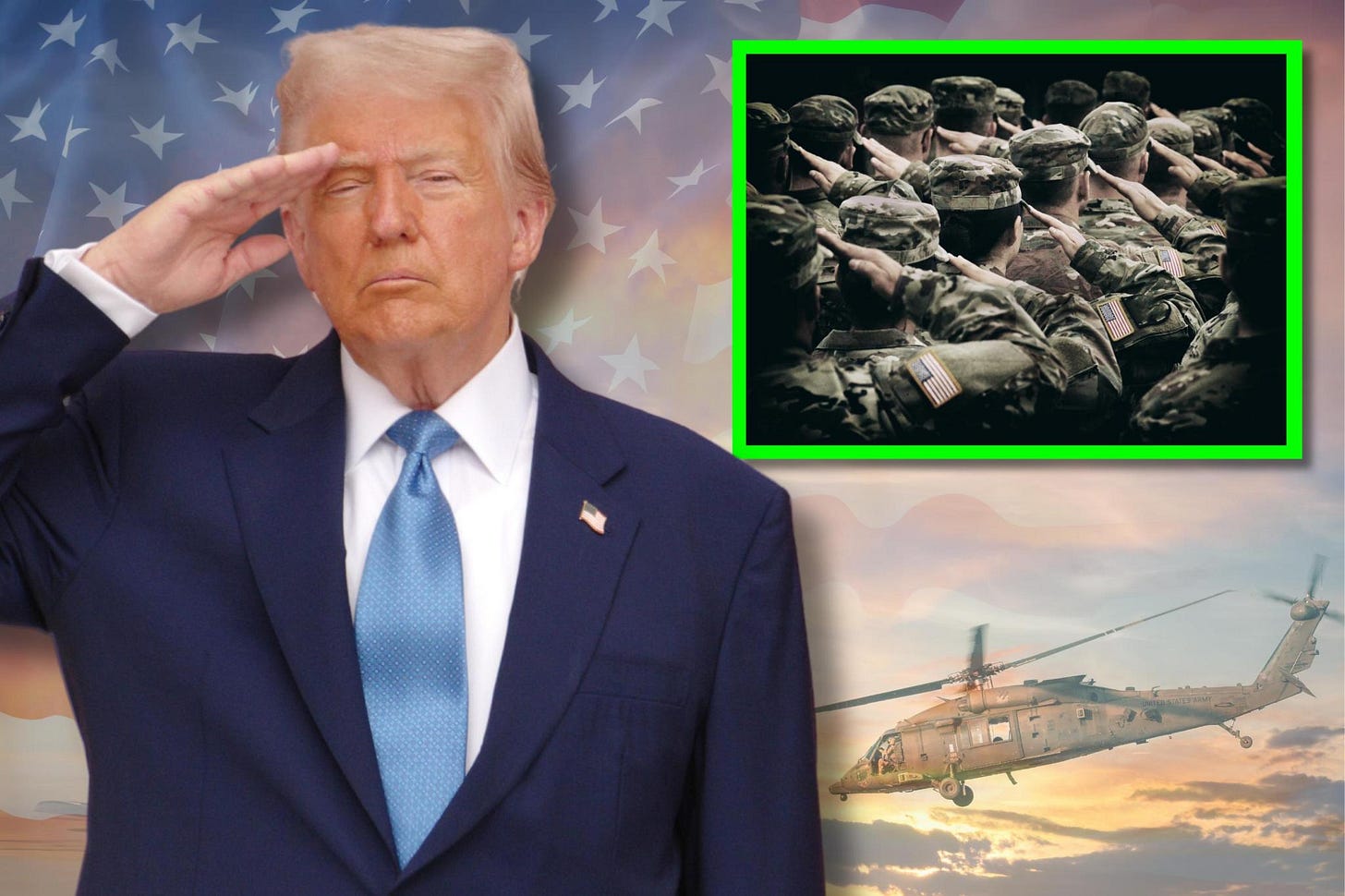Trump Drops Two New Army Videos That Hit Like a Sledgehammer
One lit up the crowd with chants of “U-S-A!” The other struck deep with raw patriotism.
The U.S. Army just turned 250. But the way it celebrated says more about the future than the past.
President Trump headlined the anniversary with a show of force—a full-scale military parade in Washington, D.C., complete with a brand-new Army ad that marked a decisive turn in tone.
This wasn’t just a milestone event. It was a reset.
A reintroduction of the military’s mission, stripped of distractions and reframed through the lens of strength, sacrifice, and national pride.
The video opened not with slogans or dramatized voiceovers, but with real soldiers, speaking plainly about what it means to serve.
“If we get the call, we have to go somewhere—we’ll do what needs to be done. Just the way we operate here.”
Another soldier put it bluntly: “This is one of the few jobs in the nation where we all take an oath, say I’m willing to put my life on the line for you, and they’re willing to put their life on the line for me.”
The voices were calm. The visuals were raw. The underlying point was crystal clear: the military is not some sort of social experiment—it’s a calling.
Soldiers spoke about their training, their preparation, their mindset.
“It’s just what we train for. It is what we want to do. My team leaders, squad leaders know exactly what to do—check equipment, check weapons, check ammo.”
And they weren’t talking in hypotheticals.
“We’re always ready to deploy within 18 hours,” one said.
“And handle the mission at task.”
These weren’t actors—these were warfighters describing their reality.
Trump’s voice followed with a familiar refrain:
“God bless you, God bless our soldiers and God bless the U.S. Army!”
The crowd didn’t wait for a cue.
As the screen went dark, chants of “U-S-A! U-S-A!” broke out instantly, rolling throughout the parade like a tidal wave.
But there was something different about the moment. It wasn’t just patriotic, it felt like a return to clarity.
For years, military messaging had been muddled by a steady drip of social priorities—vaccination campaigns, gender politics, environmental pledges.
The mission had gotten lost in the margins.
Now, that fog was lifting.
Then came the next piece: a documentary-style clip on the U.S. Army Rangers.
It hit like a thunderclap.
The video asked a simple, unflinching question—what does it take to be one of the elite?
The answers came fast, backed by footage of punishing drills and unrelenting terrain.
This wasn’t marketing fluff. This was a look into the kind of training that breaks most people—and builds the rest into warriors.
“We need young leaders to be able close with and destroy the enemy, and defend our nation’s interests forward.”
Then came the line that defined the mindset: “Surrender is not a Ranger word. It’s not an option.”
The voiceover continued:
“It all starts at the legendary Ranger school. The crucible where these elite warriors are forged. It has been described as the longest approved gut-check in the Army.”
For 62 days, trainees push through mountains and swamps, carrying crushing loads with little food or sleep.
And they do it not for glory, but because they believe in the mission—and in each other.
The subtext of the clip wasn’t hard to read.
This is what the Army used to celebrate. This is what it’s returning to.
But the shift didn’t begin at the parade.
It started weeks earlier, when the Department of Defense released a different kind of recruitment video—one that cut straight through the noise.
It was called Peace Through Strength.
And it hit harder than any military ad in recent memory.
“No more distractions. No more electric tanks. No more gender confusion. No more climate change worship,” said Pete Hegseth, over footage of soldiers grinding through real-world training.
There were no filters. No virtue signaling. Just readiness. Discipline. Purpose.
“We are laser focused on our mission of war-fighting.”
Then came Trump’s voice again—this time with the philosophy behind it all:
“We will measure our success not only by the battles we win, but also by the wars we end—and perhaps most importantly, the wars we never get into. It’s called: peace through strength.”
It was a return to first principle, and it didn’t apologize for it.
The latest military ads mark a clear shift in direction.
After years of fragmented messaging, they re-center the mission around what matters: strength, service, and purpose.
For 250 years, This We’ll Defend has defined the Army.
Not as a slogan, but as a standard.
In recent years, that standard was at risk—blurred by political detours and cultural distractions.
But now, the message is sharper, the values more focused.
These videos are inviting young Americans to rise to the challenge. To commit. To lead. To earn their place.
And once again, the spotlight is right where it belongs: on the individuals who step forward, knowing the risks—and choosing to serve anyway.
This story was made possible with the help of Overton —I couldn’t have done it without him.
If you’d like to support his growing network, consider subscribing for the month or the year. Your support helps him expand his team and cover more stories like this one.
We both truly appreciate your support!





HB ARMY 250!!
A beautifully crafted article. Thank you for including the video footages. I missed some of these while watching the entire parade.